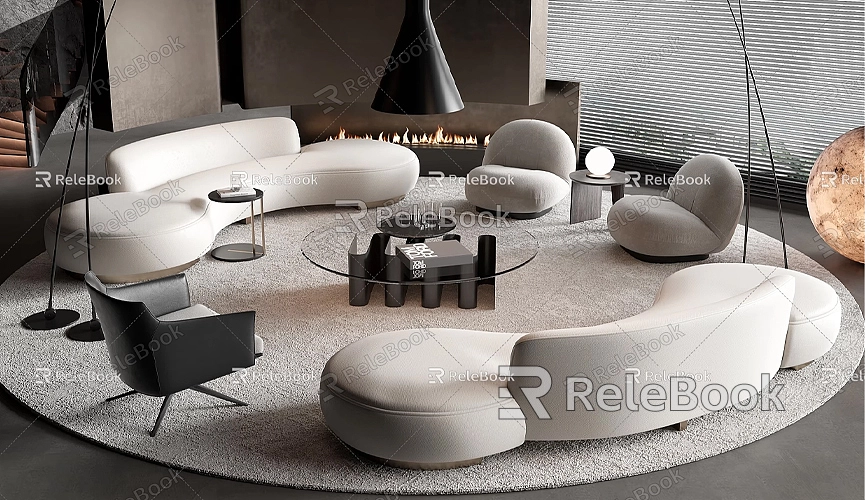How to Import a 3D AutoCAD Model into SketchUp
Importing a 3D AutoCAD model into SketchUp is an essential skill for architects, designers, and engineers in their daily workflows. This process not only improves efficiency but also allows for effective integration of existing design resources. By importing AutoCAD files into SketchUp, users can work in a more intuitive and flexible environment for design and modification. This article will guide you through the process of importing a 3D AutoCAD model into SketchUp and provide useful tips and techniques to ensure a smooth import.
Understanding File Formats

Before importing, it's important to understand the file formats used by AutoCAD and SketchUp. AutoCAD typically saves files in .dwg or .dxf formats, which SketchUp can import directly. This makes the file conversion process simple, without the need for additional software.
To ensure successful import, make sure the AutoCAD file is saved in one of the supported formats (.dwg or .dxf). This can usually be done by selecting the "Save As" option in the File menu within AutoCAD.
Preparing the AutoCAD Model
Proper preparation of the AutoCAD model is crucial before importing it into SketchUp. A well-organized model will not only increase the success rate of the import but also ensure better results in SketchUp. Here are some essential preparation steps:
- Clean Up the Model: Remove unnecessary layers and objects in AutoCAD. This reduces the file's complexity and improves SketchUp’s performance. Make sure to only retain the essential elements of the model.
- Check Units: Ensure that the unit settings in AutoCAD match those in SketchUp. For example, if you're working in meters in AutoCAD, make sure to set the same unit in SketchUp. This avoids scaling issues during import.
- Save the File: After organizing the model, save it in the correct format (.dwg or .dxf). It's also recommended to save using a newer version of AutoCAD to improve compatibility.
Importing the Model into SketchUp
Once the preparation is complete, you're ready to import the AutoCAD model into SketchUp. Follow these steps:
1. Open SketchUp: Launch SketchUp and either create a new project or open an existing one.
2. Import the File: Go to the File menu and select Import. In the import dialog, choose the file type (.dwg or .dxf) and locate the AutoCAD file you saved earlier. Click Open.
3. Adjust Import Settings: During the import process, you may be prompted to set some options, such as scale and orientation. Ensure that these settings are correct, and click OK to complete the import.
4. Position and Scale: After importing, the model will appear in SketchUp. You may need to reposition or rescale it to fit your project. Use the Move and Scale tools to adjust the model’s placement and size.
Adjusting the Imported Model

Once the model is imported, you may need to adjust several aspects:
- Layers and Groups: Imported AutoCAD models might contain multiple layers. It’s a good idea to organize these layers in SketchUp. Create groups or components to help manage the complex structure of the model for easier editing in the future.
- Materials and Textures: Depending on how the AutoCAD model was created, some materials or textures may not transfer perfectly into SketchUp. You may need to reapply textures or materials in SketchUp to ensure the model looks as intended.
- Cleaning Geometry: Sometimes, the imported geometry can be complex or messy. Use SketchUp's tools to clean up unnecessary edges and faces, which will improve both performance and visual appearance.
Troubleshooting Common Issues
Although the import process is relatively straightforward, you may encounter some common issues:
- Scaling Issues: If the model size seems off, check the unit settings in both AutoCAD and SketchUp. During the import, you can adjust the scale settings to correct this issue.
- Missing Geometry: If parts of the model are missing, check the original AutoCAD file to ensure that the elements are not on hidden layers. You can make them visible in AutoCAD before saving and importing again.
- Performance Issues: Large models can slow down SketchUp’s performance. If the model is too large, consider simplifying the model in AutoCAD before import, or use SketchUp’s components feature to manage complexity.
Tips and Best Practices
To ensure a smooth import process, here are some additional practical tips:
- Save Frequently: Make sure to save your SketchUp project regularly to avoid losing data, especially when working with large or complex models.
- Import in Steps: If the model is very large, consider breaking it into smaller parts and importing them separately. This reduces the amount of data imported at once and minimizes the chances of errors.
- Use Reference Files: In AutoCAD, create a simplified reference file specifically for importing into SketchUp. This helps avoid cluttering your main design file with unnecessary elements during the import process.
Conclusion
The process of importing a 3D AutoCAD model into SketchUp is relatively simple but requires careful preparation and attention to detail. By cleaning up the model, verifying units, and adjusting import settings, you can successfully convert AutoCAD files into editable models in SketchUp. With practice and familiarity with both software tools, you'll be able to work more efficiently and creatively in your design projects.
If you need high-quality 3D textures and HDRI for your models and virtual scenes, visit [Relebook Textures](https://textures.relebook.com/) to download free resources. Additionally, for beautiful 3D models, check out [Relebook 3D Models](https://3dmodels.relebook.com/), which offers a wide range of top-notch resources to enhance your design experience and project quality.

